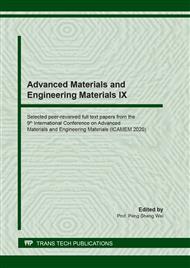p.421
p.429
p.438
p.446
p.452
p.458
p.465
p.473
p.482
Consolidation Behavior of Clay Supported by Soil-Cement Column
Abstract:
This paper presents the compression and consolidation behaviors of clay supported by soil-cement column. A series of consolidation tests was performed on kaolin samples supported by soil-cement column with the ratio between diameters of column and soil sample () ranging from 0 to 0.4. All samples with soil-cement column were cured for 28 days under the vertical pressure of 25 kPa. The sample preparation techniques simulating dry deep soil mixing method was developed. The test results showed the elastic region expanded with increasing value of . However, there was no effect of on deformation behavior in the elasto-plastic region. Moreover, the value of was considered constant over the range of testing stress level, for the value of of 0 and 0.2. For the value of of 0.3 and 0.4, the values of in the elastic region was greater than that in elasto-plastic region.
Info:
Periodical:
Pages:
452-457
Citation:
Online since:
September 2020
Authors:
Keywords:
Price:
Сopyright:
© 2020 Trans Tech Publications Ltd. All Rights Reserved
Share:
Citation:


